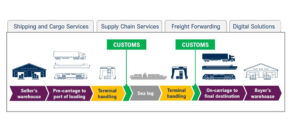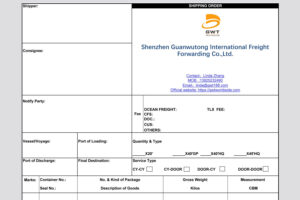Do you have a demand of shipping copper wire from China? I will be glad if the content could help you a little
Shipping copper wire from China – What you need to know. Copper wire is widely used in industries such as transposed conductors, ultra-high voltage cables, various types of wires and cables, various types of enameled wires, network wires, electronic wires and communication wires. The ocean cargo is generally heavy container shipping.

Copper cargo features
Copper wire is a highly valuable and widely used industrial material known for its excellent electrical conductivity, malleability, and resistance to corrosion. These features make it indispensable in various applications, including electrical wiring, telecommunications, and electronics manufacturing.
Physical Properties: Copper wire is typically characterized by its reddish-brown color and shiny appearance. It is available in various gauges and forms, such as bare wire or insulated wire, depending on its intended use.
Density and Weight: Copper is a dense metal, which often results in shipments being classified as overweight. This is especially true for full container load (FCL) shipments, where weight limits can be a concern.
Packaging: Copper wire is usually wound onto spools or reels to prevent tangling and damage during transit. Proper packaging is crucial to maintain the integrity of the wire and facilitate easy handling.
Value: As a high-value cargo, copper wire requires careful handling and secure transportation to prevent theft and damage. Insurance is often recommended to cover potential risks.
How to shipping copper wire from China? Refer to this shipping case study presented GWT Worldwide, a WCA member logistics enterprise from Shenzhen, China.
Learn GWT Ocean Freight Forwarding Service
Learn GWT Air Freight Forwarding Service
Shipping features of shipping copper wire from China
Less than Container Load (LCL) Shipment: In this instance, the copper wire shipment weighs 6,700 kg and is being transported as an LCL shipment. This means it shares container space with other goods, which is cost-effective for smaller shipments.
Weight Considerations: Although copper wire is typically considered an overweight cargo in FCL shipments, the LCL approach allows for more flexibility. The weight of 6,700 kg must be carefully accounted for to ensure compliance with weight restrictions and balance within the container.
Handling and Security: Given its high value, copper wire requires secure handling. This includes using tamper-proof seals and possibly GPS tracking to monitor the shipment during transit.
Customs and Documentation: Copper wire shipments must comply with international trade regulations. Proper documentation, including certificates of origin and material safety data sheets (MSDS), is essential to facilitate smooth customs clearance.
Environmental Considerations: Copper is recyclable, and shipments often need to adhere to environmental regulations. Ensuring compliance with these regulations is important for sustainable logistics practices.
In summary, shipping copper wire, especially as an LCL shipment, requires careful planning and execution. Understanding its cargo features and addressing shipping considerations ensure that the copper wire reaches its destination safely and efficiently.

































